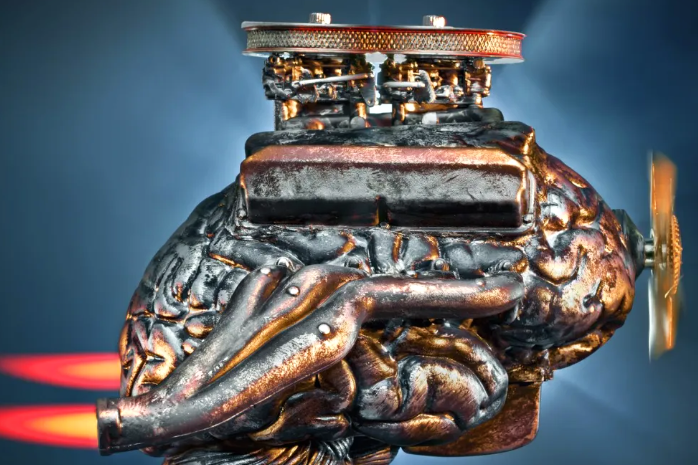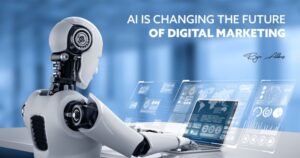
Scientists Have Created Hybrid Intelligence
For more than a decade, scientists have been creating artificial brain tissue, known as brain organoids, in the lab and integrating them with computer chips.
A new study took this idea one step further and even implanted the organoid in a humanoid-like robot.
PROCEED TO => Scientists Have Created Hybrid Intelligence
Scientists Have Created Hybrid Intelligence
In a groundbreaking leap forward, scientists have successfully developed hybrid intelligence—a fusion of human cognition and artificial intelligence (AI) that promises to redefine the boundaries of innovation, problem-solving, and decision-making.
This revolutionary advancement, announced in early 2025, combines the intuitive, creative strengths of the human mind with the computational power and data-processing capabilities of advanced AI systems.
The result is a synergistic intelligence that outperforms either component in isolation, opening new frontiers in science, medicine, and technology.
The Genesis of Hybrid Intelligence
The concept of hybrid intelligence has been a topic of speculation for decades, but recent advances in neural interfaces, machine learning, and cognitive science have turned this vision into reality.
Researchers from leading institutions, including MIT, Stanford, and the European AI Research Consortium, collaborated on the project, which was partially funded by private tech innovators like xAI. Their goal was to create a system where human and machine intelligence could work in tandem, leveraging each other’s strengths to tackle complex challenges.
The breakthrough came with the development of a non-invasive brain-computer interface (BCI) that allows seamless communication between human neural networks and AI algorithms.
Unlike earlier BCIs, which were limited by slow data transfer rates or invasive implantation, this new interface uses advanced neuroimaging and electromagnetic signal processing to interpret human thoughts and translate them into machine-readable instructions in real time. Conversely, the AI can deliver insights, calculations, and predictions directly to the human brain via sensory feedback, creating a closed-loop system.
How Hybrid Intelligence Works
Hybrid intelligence operates on a principle of mutual augmentation. The human component provides creativity, emotional intelligence, and contextual understanding, while the AI contributes rapid data analysis, pattern recognition, and vast knowledge retrieval. Together, they form a cognitive partnership that is greater than the sum of its parts.
For example, in a medical application, a doctor using hybrid intelligence could diagnose a rare disease by combining their clinical intuition with the AI’s ability to cross-reference millions of patient records and research papers in seconds. The doctor’s empathy and bedside manner remain uniquely human, while the AI ensures precision and evidence-based recommendations. Similarly, in scientific research, hybrid intelligence has already accelerated discoveries in quantum physics and materials science by allowing researchers to explore hypotheses with unprecedented speed and accuracy.
The system is not without its challenges. Ensuring compatibility between human and machine cognition required overcoming significant hurdles, including aligning the AI’s probabilistic reasoning with the often non-linear, intuitive nature of human thought. Researchers addressed this by developing adaptive AI models that learn to “think” more like their human counterparts over time, creating a personalized cognitive synergy.
Real-World Applications
The potential applications of hybrid intelligence are vast and transformative. Some of the most promising areas include:
Healthcare: Hybrid intelligence is revolutionizing diagnostics, personalized medicine, and surgical planning. By integrating human expertise with AI’s data-crunching capabilities, doctors can make faster, more accurate decisions, improving patient outcomes.
Scientific Discovery: From climate modeling to particle physics, hybrid intelligence is accelerating research by enabling scientists to process massive datasets and explore novel hypotheses in real time.
Education: Personalized learning systems powered by hybrid intelligence can adapt to individual student needs, combining human mentorship with AI-driven insights to optimize educational outcomes.
Creative Industries: Artists and designers are using hybrid intelligence to push creative boundaries, blending human imagination with AI-generated patterns, sounds, and visuals to produce entirely new forms of art.
Business and Policy: Decision-makers are leveraging hybrid intelligence to navigate complex economic and geopolitical landscapes, balancing human judgment with AI’s predictive analytics.
Ethical and Societal Implications
While the creation of hybrid intelligence is a monumental achievement, it also raises profound ethical questions. Who controls the interface between human and machine? How can we prevent misuse of this technology in areas like surveillance or manipulation? And what does it mean to be human in an era where our cognitive abilities are augmented by machines?
To address these concerns, the research consortium has proposed a global framework for the ethical development and deployment of hybrid intelligence. Key principles include transparency, user consent, and robust safeguards against unauthorized access to neural data. Public discourse on these issues is already underway, with forums on platforms like X amplifying diverse perspectives from technologists, ethicists, and policymakers.
The Future of Hybrid Intelligence
As hybrid intelligence matures, it has the potential to reshape society in ways we are only beginning to understand. Researchers are already exploring next-generation systems that could integrate multiple human minds with AI, creating collaborative “superintelligences” capable of solving humanity’s most pressing challenges, from curing diseases to mitigating climate change.
For now, the successful creation of hybrid intelligence marks a turning point in our relationship with technology. It is not about replacing humans or surrendering to machines but about forging a partnership that amplifies our collective potential. As one lead researcher put it, “This is not the end of human intelligence—it’s the beginning of something even greater.”
The journey toward hybrid intelligence has just begun, and its impact will undoubtedly be felt for generations to come. As we stand on the cusp of this new era, one thing is clear: the future is not human or machine—it’s both, working together in harmony.
DISCOVER the new technology that can help you increase your brain power.
🥰 => Money Wave
*** Many users report noticeable improvements in their
. financial situation,
. luck, and
. opportunities
after using The Money Wave. 


